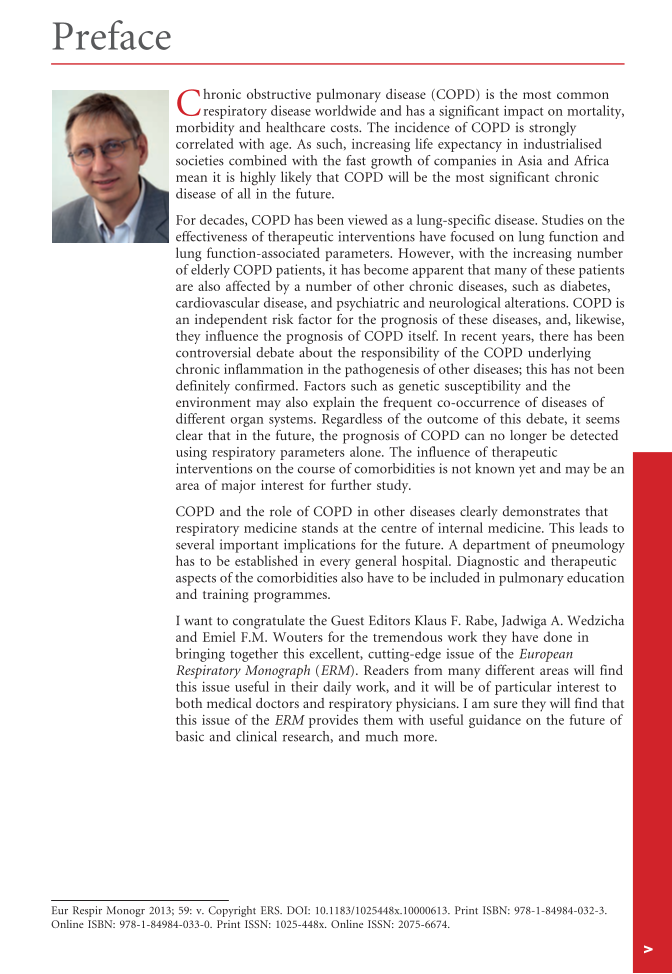Preface Chronic obstructive pulmonary disease (COPD) is the most common respiratory disease worldwide and has a significant impact on mortality, morbidity and healthcare costs. The incidence of COPD is strongly correlated with age. As such, increasing life expectancy in industrialised societies combined with the fast growth of companies in Asia and Africa mean it is highly likely that COPD will be the most significant chronic disease of all in the future. For decades, COPD has been viewed as a lung-specific disease. Studies on the effectiveness of therapeutic interventions have focused on lung function and lung function-associated parameters. However, with the increasing number of elderly COPD patients, it has become apparent that many of these patients are also affected by a number of other chronic diseases, such as diabetes, cardiovascular disease, and psychiatric and neurological alterations. COPD is an independent risk factor for the prognosis of these diseases, and, likewise, they influence the prognosis of COPD itself. In recent years, there has been controversial debate about the responsibility of the COPD underlying chronic inflammation in the pathogenesis of other diseases this has not been definitely confirmed. Factors such as genetic susceptibility and the environment may also explain the frequent co-occurrence of diseases of different organ systems. Regardless of the outcome of this debate, it seems clear that in the future, the prognosis of COPD can no longer be detected using respiratory parameters alone. The influence of therapeutic interventions on the course of comorbidities is not known yet and may be an area of major interest for further study. COPD and the role of COPD in other diseases clearly demonstrates that respiratory medicine stands at the centre of internal medicine. This leads to several important implications for the future. A department of pneumology has to be established in every general hospital. Diagnostic and therapeutic aspects of the comorbidities also have to be included in pulmonary education and training programmes. I want to congratulate the Guest Editors Klaus F. Rabe, Jadwiga A. Wedzicha and Emiel F.M. Wouters for the tremendous work they have done in bringing together this excellent, cutting-edge issue of the European Respiratory Monograph (ERM). Readers from many different areas will find this issue useful in their daily work, and it will be of particular interest to both medical doctors and respiratory physicians. I am sure they will find that this issue of the ERM provides them with useful guidance on the future of basic and clinical research, and much more. Eur Respir Monogr 2013 59: v. Copyright ERS. DOI: 10.1183/1025448x.10000613. Print ISBN: 978-1-84984-032-3. Online ISBN: 978-1-84984-033-0. Print ISSN: 1025-448x. Online ISSN: 2075-6674. v
